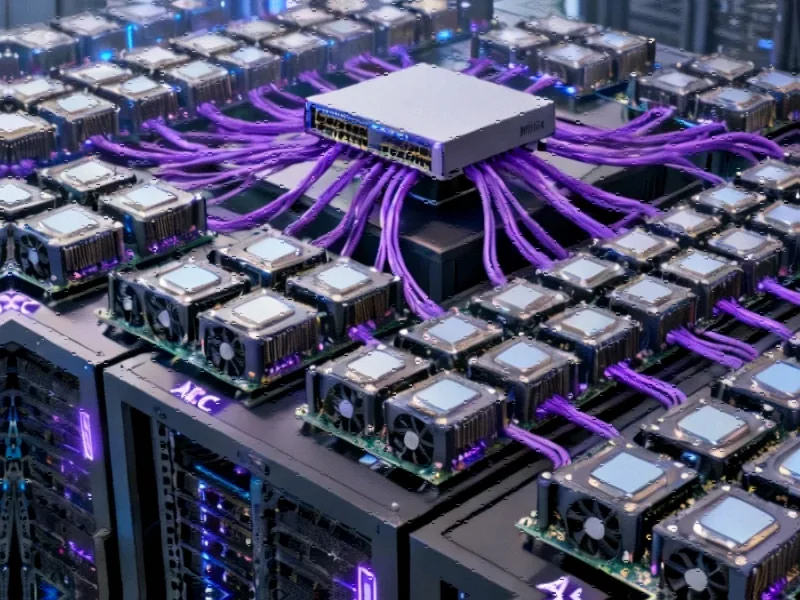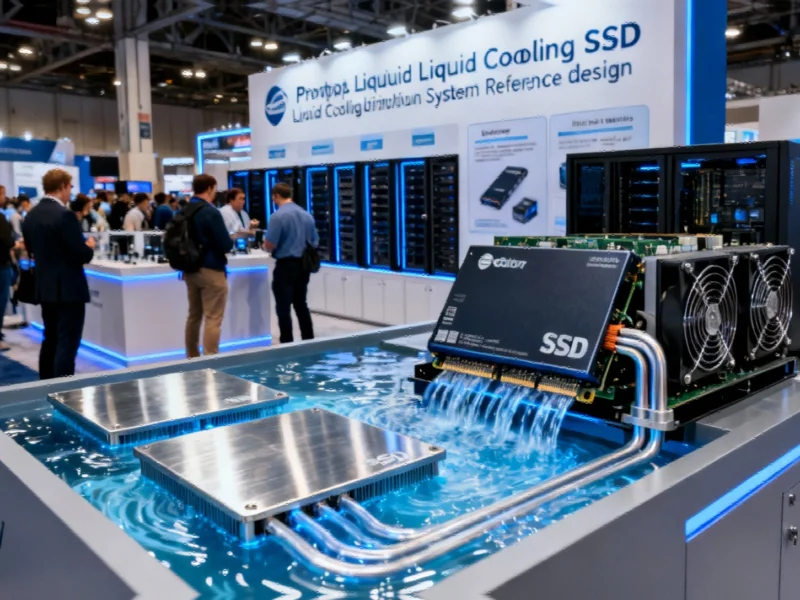The Critical Role of Connectivity in AI’s Evolution
While much attention in the artificial intelligence boom focuses on processors and chips, a quiet revolution is happening in the often-overlooked realm of data center connectivity. As AI models grow exponentially in size and complexity, the humble cables connecting these powerful systems have emerged as a critical bottleneck—and opportunity. The shift from traditional server architectures to massive GPU clusters has created unprecedented demands for reliable, high-speed data transmission that can keep pace with trillion-parameter AI models.
From Peripheral to Central: The Cable’s Transformation
In traditional data centers, connectivity was almost an afterthought—servers typically featured one or two processors with straightforward networking needs. Today’s AI infrastructure represents a fundamental architectural shift, with individual servers now housing up to eight processors and the most advanced AI clusters requiring millions of GPUs working in concert. This dramatic scaling has transformed connectivity from supporting cast to starring role in AI performance.
Nvidia’s latest systems combine multiple boards to create configurations with 72 GPUs, with plans to double that count next year and reach an astonishing 572 GPUs in their forthcoming Kyber racks. This exponential growth creates what industry analyst Alan Weckel describes as a “nine-fold opportunity”—where previously one cable sufficed per server, now AI servers require nine specialized connections to maintain optimal performance across the entire system.
The Technical Breakthrough Behind Purple Cables
Active Electrical Cables (AECs) represent a significant advancement over traditional connectivity solutions. Unlike conventional copper cables or fiber optics, AECs incorporate sophisticated digital signal processors on both ends that use advanced algorithms to extract data efficiently from the cable. This technology enables transmission lengths up to seven meters—far exceeding what traditional copper can achieve while offering greater reliability than fiber optic alternatives.
Credo’s distinctive purple cables have captured significant market share by addressing a critical pain point in AI infrastructure: reliability. As CEO Bill Brennan explains, the consequences of connectivity failure in AI clusters can be catastrophic. “Link flaps”—where part of an AI cluster goes offline due to cable failure—can waste hours of expensive GPU computation time and, in extreme cases, “literally shut down an entire data center.” This reliability concern has pushed hyperscalers to prioritize robust connectivity solutions during the planning stages of massive AI deployments.
Market Dynamics and Competitive Landscape
The AI networking chip market represents an enormous opportunity, with TD Cowen analysts projecting it could reach $75 billion annually by 2030. While Credo currently dominates the AEC space with an estimated 88% market share, they face competition from established players like Astera Labs and Marvell. The broader AI investment landscape continues to evolve rapidly as companies position themselves within this trillion-dollar ecosystem.
Major technology providers including Nvidia and Advanced Micro Devices maintain significant influence through their integrated networking businesses and ability to dictate which technologies become part of their broader systems. This complex interplay between component manufacturers and system integrators creates both challenges and opportunities for specialized suppliers. Recent industry developments suggest increasing consolidation as the market matures.
The Hyperscaler Connection
While Credo maintains confidentiality around specific clients, industry analysts have identified Amazon and Microsoft as key customers. Evidence continues to mount—from AWS CEO Matt Garman’s LinkedIn post showing Trainium AI chip racks with distinctive purple cables to Credo’s recent presentation alongside Oracle Cloud at a major industry conference. The company anticipates three to four customers will each constitute more than 10% of revenue in coming quarters, including two new hyperscale clients added this year.
The relationship between cable manufacturers and hyperscalers has evolved significantly, with suppliers now engaging during early design phases of massive AI clusters. As Brennan notes, “When you connect with these hyperscalers, the numbers are very large.” This collaborative approach reflects how critical connectivity has become to overall system performance, especially as designs grow denser and require more servers to be connected via shorter cables.
Broader Industry Implications
The success of specialized connectivity solutions highlights a broader trend in technology infrastructure: as systems grow more complex, previously commoditized components can become strategic differentiators. This phenomenon extends beyond AI to other sectors where healthcare providers and various industries face integration challenges with advanced technologies.
The cable revolution also intersects with other related innovations in data transmission and processing. As computational demands increase across applications from extended reality to traditional enterprise computing, the lessons from AI infrastructure are likely to influence connectivity standards more broadly. These market trends reflect how specialized components can achieve strategic importance in evolving technological ecosystems.
Future Outlook and Challenges
The AI infrastructure market faces both enormous potential and significant uncertainty. While analysts project $1 trillion in AI data center spending by 2030, this growth depends on continued investment from major cloud providers and sustained progress in AI development. Any scaling back of ambitious plans from industry leaders like OpenAI could ripple through the supply chain, affecting specialized component manufacturers alongside broader platform providers.
Looking forward, the industry must navigate several challenges:
- Technical scalability – Maintaining signal integrity across increasingly dense configurations
- Cost management – Balancing performance gains with economic realities
- Standardization – Establishing interoperability across different systems and providers
- Reliability – Ensuring consistent performance across massive deployments
These challenges occur against a backdrop of rapid industry transformation where technological advancement must be matched by operational excellence. As Brennan summarized to investors, “Every time you see a new announcement of a gigawatt data center, you can rest assured that we view that as an opportunity.” This perspective captures how specialized component manufacturers have positioned themselves at the heart of the AI revolution—not as peripheral suppliers, but as essential enablers of next-generation computing.
The emerging landscape of purple connectivity cables represents more than just a colorful solution to a technical problem—it symbolizes how innovation often occurs in unexpected places, transforming humble components into critical infrastructure that powers technological revolutions.
This article aggregates information from publicly available sources. All trademarks and copyrights belong to their respective owners.
Note: Featured image is for illustrative purposes only and does not represent any specific product, service, or entity mentioned in this article.



